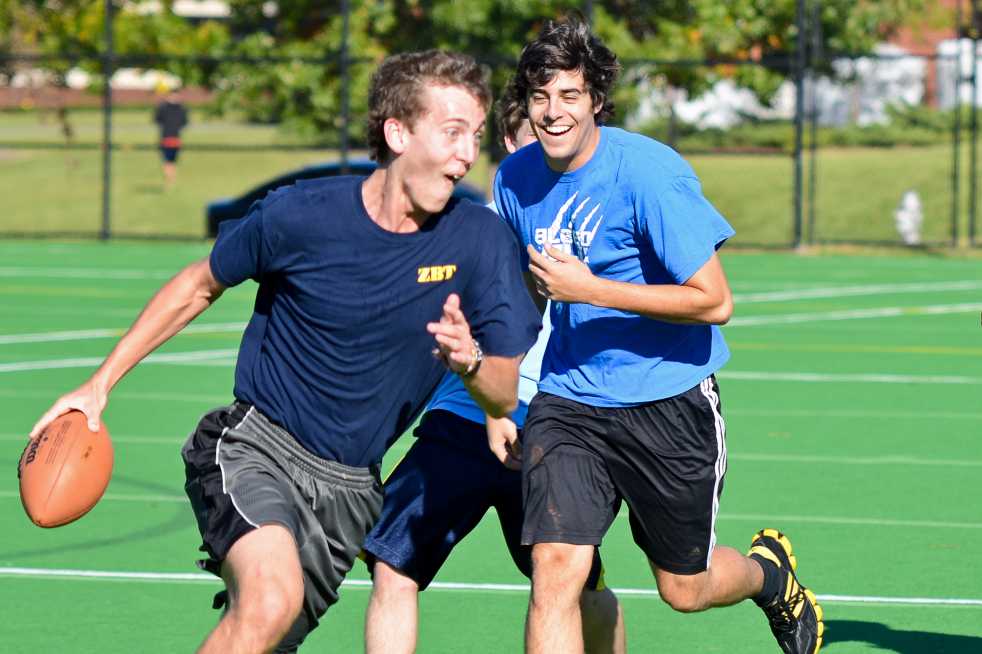The Campus Recreation Center (CRC) is now the planning stages for a major renovation to the Roe Stamps Fields, commonly referred to as the SAC Fields. The plans being discussed involve a complete replacement of the turf fields as well as a number of other improvements in the area, totaling $4,502,700.
Driving the project has been the state of the turf field. The carpet, the upper layer of an artificial turf field such as the one at the CRC, has a lifetime of about eight to ten years. It has now been over ten years since the carpet was last replaced in 2002. The wear on the carpet has led to the replacement of entire sections of the field to prevent injuries.
“We’ll just continue to band-aid it until we eventually can’t band-aid it anymore,” said Michael Edwards, Director of the CRC. “I think there are risks involved if we don’t get [the field] replaced in the near future.”
“Construction would start at the end of spring semester and it would be done by the time by the time we got back in the Fall.”
To determine which system to use, the CRC and Breedlove Land Planning, the company retained for the planning, along with a number of representatives of the Student Government Association (SGA) visited a number of nearby turf fields to determine the type of field to be used on the SAC fields.
As part of a comprehensive plan to renovate the Roe Stamps Fields, Breedlove Planning investigated the various options for the renovation and presented different options to the CRC and other Institute administrative groups. All of the concepts included replacing the turf field and other necessary landscaping changes, but each had different additions to the area and configurations. Some optional features proposed were spectator seating, storage units for athletic equipment, hydration stations and a walking and running path. After discussion of the different concepts, they decided on a combination of two of the original proposals as the concept to pursue.
“We are currently designing the concept of a new field, storage units, lights and a running walking surface,” Edwards said. “It will all depend on funding and phasing in the end. The design allows us to be ready if and when funding becomes available.”
After the CRC settled on the preferred design concept, they met with key members of SGA to discuss funding of the project.
“It’s going to take a partnership in the funding from a number of sources,” Edwards said. “We would look to partner with students as well for a portion of that [funding].”
Several members of the student delegation have expressed concern over the amount of funding requested of them by the CRC.
“They basically gave us [the plan] and said, ‘Hey, we want you as student government to pay for the synthetic field and the actual turf itself and the storage units’,” said Daniel Farmer, Vice President of Finance for SGA. “If you don’t want the storage units, it’s $600,000 for the field. If you do want it, it’s $1 million for the whole package.”
SGA currently has less than $800,000 in Prior Year and Capital Outlay, the two accounts used to fund organizations throughout the year. Additional money would have to be drawn from next year’s allocations.
“In order to give them everything they want, we would have to give them everything from this year as well as everything that’s left over from the budget which means prior year and capital [outlay] next year would be zero,” Farmer said.
Representatives also expressed concern from being left out of some of the planning stages of the project.
“This [plan] was sort of brought to us as the best solution,” said Nicolas Picon, Vice President of Campus Affairs for SGA. “I wouldn’t go so far as to say that they had made the decision for us. We were concerned with that and we did respond that we wanted to be a part of the planning process for the other proposals.”
Responding to SGA’s request, the CRC delivered the master plan document containing each of the proposed concepts. SGA is currently discussing the different proposals and funding sources to comply with CRC’s request before it begins further negotiation. Both parties are looking at next fall as an achievable goal for the major field renovations to be complete.
“The proposed timeline that we’ve seen has been that construction would start at the end of spring semester and it would be done by the time by the time we got back in the Fall,” Picon said.
